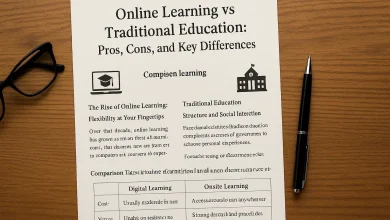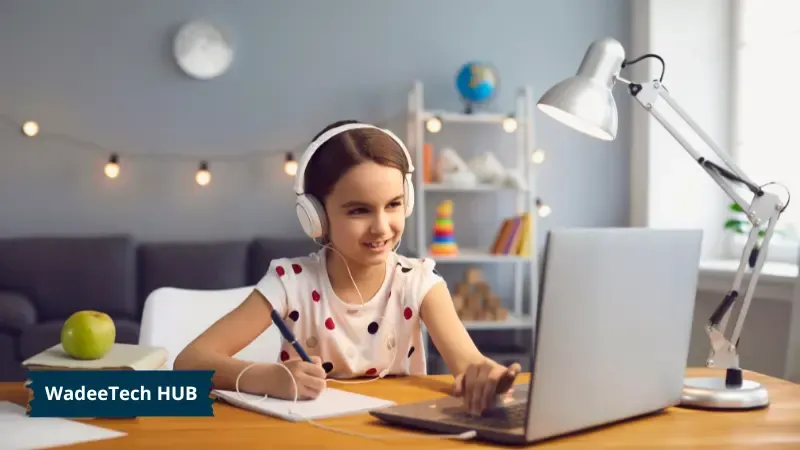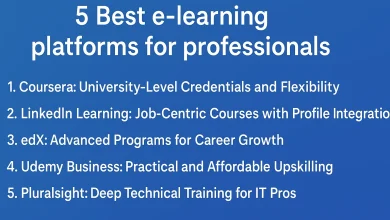How VR is Revolutionizing Education for a Brighter Future
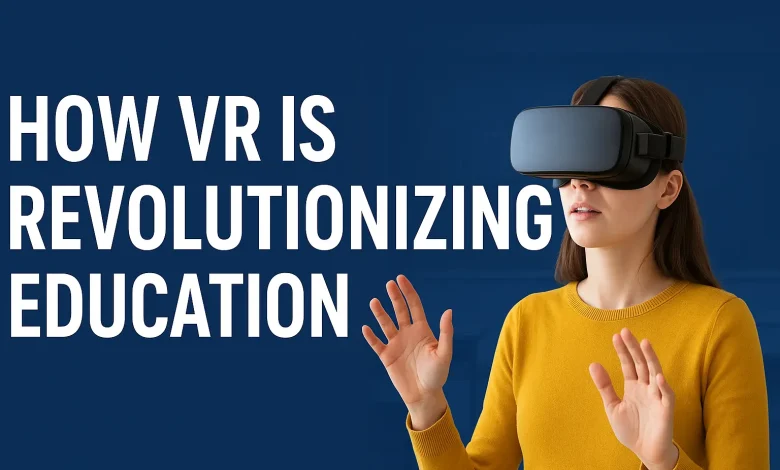
How VR is revolutionizing education is one of the most transformative trends in modern learning. Virtual Reality (VR) offers immersive experiences, interactive lessons, and personalized learning paths that change how students acquire knowledge. From virtual classrooms to advanced simulations, VR is reshaping both teaching and learning. This article explores the main ways how VR is revolutionizing education, its benefits, and its role in the future of educational technology.
How VR is Revolutionizing Education in Classrooms
One of the most visible ways how VR is revolutionizing education is by creating immersive classrooms. Students can now explore historical sites, perform virtual science experiments, or visualize complex subjects in 3D. Immersive learning environments help students understand abstract concepts and improve engagement.
Key Benefits:
- Interactive Lessons: Encourages active participation rather than passive reading or listening.
- Virtual Field Trips: Access experiences that are otherwise costly or impossible.
- Enhanced Concept Understanding: Makes complex ideas tangible, improving comprehension.
Summary: VR classrooms make learning interactive, engaging, and more accessible for students everywhere.
How VR is Revolutionizing Education Through Personalized Learning
Another major impact of how VR is revolutionizing education is personalized learning. VR systems adapt content to each student’s pace, style, and skill level. Teachers can monitor progress in real-time, providing targeted support when needed.
Benefits:
- Tailored Learning Paths: Lessons adjust according to individual needs.
- Self-Paced Education: Students can revisit material until mastery is achieved.
- Motivation and Engagement: Gamified experiences encourage exploration and repetition.
Summary: Personalized VR learning ensures effective education by addressing each student’s unique learning requirements.
How VR is Revolutionizing Education with Virtual Labs and Simulations
Virtual labs demonstrate another key way how VR is revolutionizing education. Students perform experiments in a safe, controlled virtual environment, reducing risks and costs associated with real laboratories.
Advantages:
- Safety: Experiments are risk-free, with no chemical or equipment hazards.
- Cost Efficiency: Schools save on materials, maintenance, and equipment.
- Unlimited Practice: Students can repeat exercises as many times as needed.
Summary: VR labs provide hands-on experience in a cost-effective and safe environment. 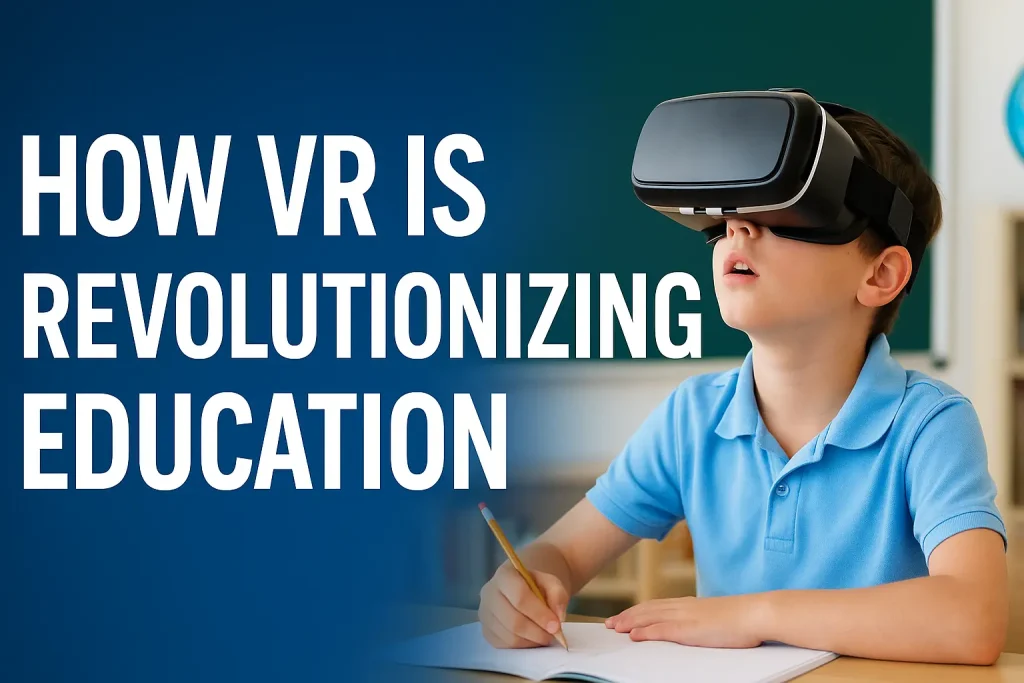
How VR is Revolutionizing Education in Language Learning and Cultural Immersion
VR also transforms language education and cultural learning. Students can practice new languages in realistic settings and interact with virtual characters, enhancing retention and comprehension.
Benefits:
- Immersive Practice: Realistic conversations improve speaking skills.
- Cultural Understanding: Students experience customs and traditions virtually.
- Active Engagement: Participation strengthens memory and learning outcomes.
Summary: VR enables students to learn languages and culture interactively, preparing them for global communication.
VR in Teacher Training and Professional Development
VR-based professional training shows how how VR is revolutionizing education beyond students. Teachers can experiment with new methods, manage virtual classrooms, and receive feedback without affecting real students.
Advantages:
- Safe Learning Environment: Teachers practice strategies risk-free.
- Engaging Workshops: VR enhances training effectiveness.
- Continuous Development: Educators can improve skills anytime, anywhere.
Summary: VR equips teachers with practical experience and boosts confidence in modern teaching.
VR in Higher Education: Expanding University Learning
Universities are adopting VR for advanced applications. How VR is revolutionizing education at this level includes medical simulations, architecture walkthroughs, and engineering projects. These virtual experiences complement traditional lectures and labs.
Benefits:
- Medical Training: Students practice surgeries and procedures safely.
- Engineering & Design: 3D modeling and virtual testing enhance understanding.
- Remote Accessibility: Students access labs and lectures from anywhere.
Summary: VR expands learning opportunities in higher education, making it practical, immersive, and globally accessible.
Challenges and Future Directions for VR in Education
Despite its advantages, VR adoption faces challenges. High costs, technical requirements, and teacher readiness are primary barriers. However, as technology improves and becomes more affordable, VR will play a central role in education.
Future Trends:
- Affordable VR Devices: Expanding access to schools worldwide.
- AI Integration: Adaptive AI combined with VR personalizes education further.
- Collaborative VR Learning: Students from different locations can interact in virtual classrooms.
Summary: Addressing challenges will allow VR to fully transform education, creating immersive, personalized learning experiences.
Conclusion: How VR is Revolutionizing Education
How VR is revolutionizing education is evident across classrooms, virtual labs, language programs, teacher training, and higher education. By making learning interactive, immersive, and personalized, VR reshapes knowledge acquisition for students and educators alike. As technology evolves, VR will become an essential part of educational strategies, empowering learners worldwide and preparing them for the future.
FAQ: How VR is Revolutionizing Education
-
How VR is Revolutionizing Education in Modern Classrooms?
Virtual Reality creates immersive learning environments where students can explore historical sites, perform science experiments, and visualize complex concepts. This approach enhances engagement and makes lessons more interactive, showing clearly how VR is revolutionizing education.
-
How VR is Revolutionizing Education Through Personalized Learning Paths?
VR platforms adapt to each student’s pace, skill level, and learning style. By providing personalized learning paths, students achieve better outcomes, demonstrating another effective way how VR is revolutionizing education.
-
How VR is Revolutionizing Education with Virtual Labs and Experiments?
Virtual labs allow students to safely perform VR experiments in science and engineering. These experiences reduce costs, minimize risks, and improve understanding, making it a practical example of how VR is revolutionizing education.
-
How VR is Revolutionizing Education for Language Learning and Cultural Immersion?
Through virtual classrooms and interactive simulations, students can practice new languages and explore different cultures. This immersive experience shows the powerful impact of how VR is revolutionizing education beyond traditional methods.
-
How VR is Revolutionizing Education in Higher Education and Teacher Training?
Universities and educators use VR for educational technology innovations, including medical simulations and professional development. This demonstrates clearly how VR is revolutionizing education, providing practical and interactive experiences for learners and teachers alike.
